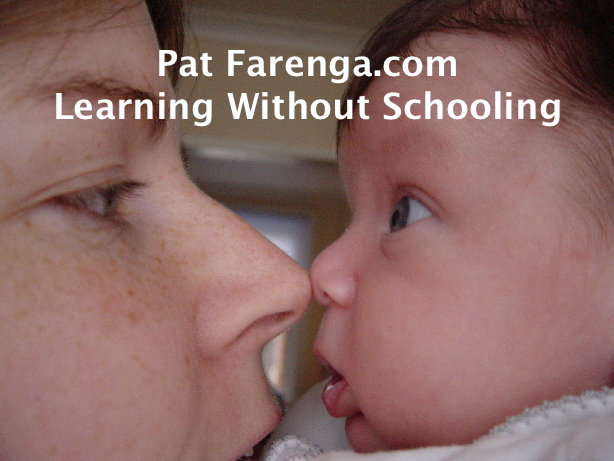Nothing in the World but Youth
 Tuesday, November 8, 2011 at 11:50AM
Tuesday, November 8, 2011 at 11:50AM The Turner Contemporary gallery in Margate, Kent, UK is curating an interesting art exhibit about young people and how they and others view their role in modern society, particularly, as noted in the exhibit catalog's Foreword, youth's "sense of non-conformity and experimentation." The show is entitled "Nothing in the World but Youth." I learned about this show when I was contacted by a curator for permission to reprint an essay of John Holt's, "The Problem of Childhood," from his book Escape from Childhood. Turner has kindly sent me a copy of the catalog and I'm impressed, not just by the fascinating images, but also by the significant selections of text they used.
The exhibit starts with works that JMW Turner painted when he was a teenager and ends with modern works commissioned just for the exhibit. Included with all this are some amazing insights into what it means to be young in a society where school dominates their time and choices and the real world is all too often off limits to youth. The curators capture some significant moments in both art and literature about what it means to be a teenager in the past and present. If you're in Britain I hope you'll be able to visit the exhibit. If not, here are some thought-provoking excerpts from essays in the catalog.
On the creation of adolescence as a stage of development by G. Stanley Hall in 1904 in Kent Baxter's essay (Re)inventing Adolescence:
It [adolescence—PF] was invented for rehabilitative purposes and spoke so well to American society and was so influential that we continue to accept it almost verbatim as truth. If we can very broadly describe ageism as 'discrimination based on age,' then many past and current attitudes toward teens would unequivocally stand guilty as charged. When an overwhelming majority of people persistetly characterizes a group as delinquent in the face of data that indicate otherwise, and when such characterizations become so commonplace as to be accepted without question, clearly there is a problem.
From "Why Youth (Heart) Social Network Sites: The Role of Networked Publics in Teenage Social Life by Danah Boyd:
While we can talk about changes that are taking place, the long-term implications of being socialized in a culture rooted in networked publics are unknown. Perhaps today's youth will be far better equipped to handle gossip as adults. Perhaps not. What we do know is that today's teens live in a society whose public life is changing rapidly. Teens need access to these publics—both mediated and unmediated—to mature, but their access is regularly restricted. Yet, this technology and networked publics are not going away. As a society, we need to figure out how to educate teens to navigate social structures that are quite unfamiliar to us because they will be faced with these publics as adults, even if we try to limit their access now. Social network sites have complicated our lives because they have made this rapid shift in public life very visibile. Perhaps instead of trying to stop them or regulate usage, we should learn from what teens are experiencing? They are learning to navigate networked publics; it is in our better interest to figure out how to help them.
"The Problem of Childhood" from Escape from Childhood (1974) by John Holt:
. . . By now I have come to feel that the fact of being a 'child,' or being wholly subservient and dependent, of being seen by older people as a mixture of expensive nuisance, slave, and super-pet, does most young people more harm than good.
I propose instead that the rights, privileges, duties, responsibilities of adult citizens be made available to any young person, of whatever age, who wants to make use of them . . .
. . . Those who are skeptical about these change may ask, 'Even if we were to admit that the change you propose would bring about a better reality, can you prove it would stay better? Might it not create problems and dangers and evils of its own?' The answer is yes, it would. No state of affairs is permanently perfect. Cures for old evils sooner or later create new ones. The most and best we can do is to try to change and cure what we know is wrong right now and deal with new evils as they come up. Of course, we have to try to use in the future as much of what we have learned in the past as we can. But though we can learn much from experience, we cannot learn everything. We can foresee and perhaps forestall some but not all of the problems that will arise in the future we make.


